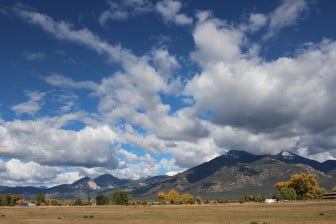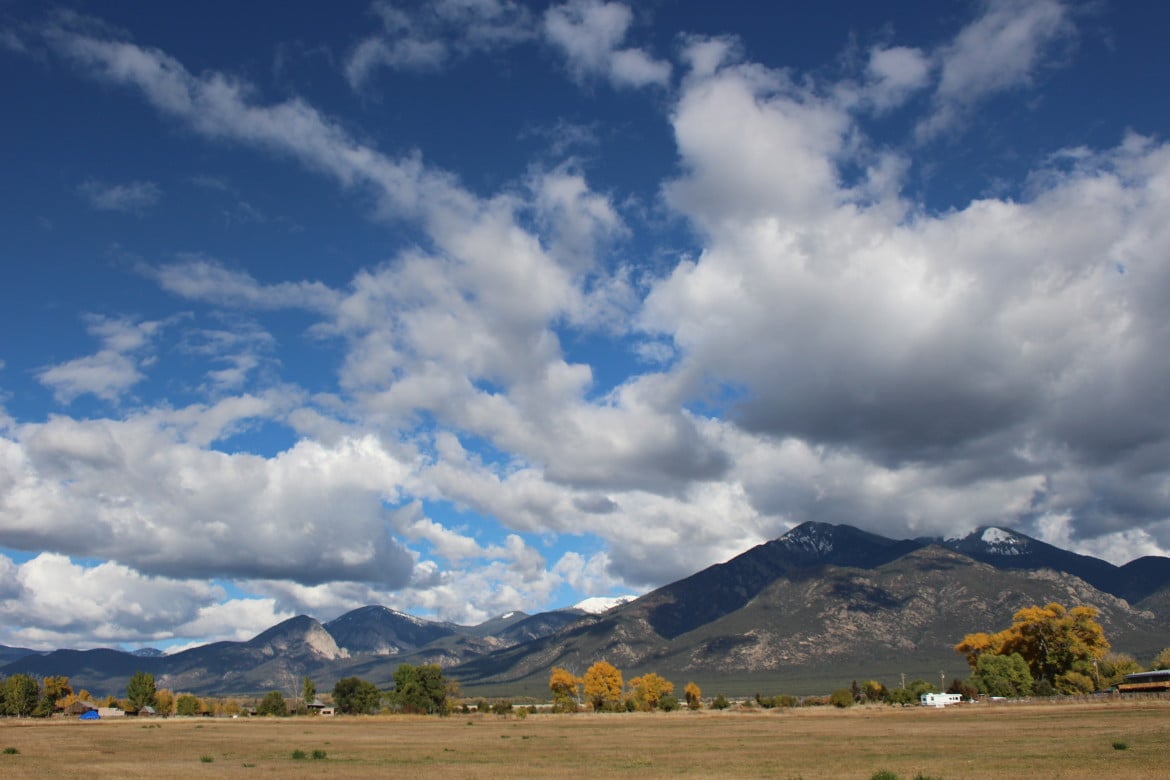Last month, NMID published a story about the challenges forecasters and water managers in New Mexico face when trying to determine how and when snowpack will melt.
As NMID reported:
“The warm spring temperatures are one of the clearest observed climate change signals in North America,” says David Gutzler, a professor in the University of New Mexico Earth and Planetary Studies Department and one of the lead authors of the Intergovernmental Panel on Climate Change’s 2013 Assessment Report.
Those warming temperatures are affecting not just when and where snows fall, but how and when snowmelt finds its way—or doesn’t—into streams, rivers and reservoirs downstream. Put another way, the warming temperatures have made it more difficult to predict how much water will be available through the spring and summer—when water demands are greatest.
Now, a study published in the peer-reviewed journal Environmental Research Letters shows that decreasing snowfall and rainfall will put many western water supplies at risk in the coming century.

Laura Paskus/NMID
What happens in the mountains matters in the valleys below.
The study’s authors looked at more than 400 river basins in the Northern Hemisphere and how they may–or may not–meet future water demands.
Among the most vulnerable basins?
The Rio Grande and the Colorado River basins, both of which supply water to New Mexico.
The authors incorporated a range of factors into their study, including population, how water demands are currently met (through rainfall or snowmelt), and multiple climate models projecting future warming.
Of the 421 basins they studied, they found that 97 river basins – supplying water to almost 2 billion people – have at least a 67 percent chance of decreased snow supply.
Of those, 32 basins are the most sensitive to changes in snowmelt—including the Rio Grande and the Colorado River.
Under the two climate models authors used to simulate historical and future snowfall and rainfall, the risk of decline in spring and summer water availability in the Rio Grande Basin is between 95 and 100 percent.
“Decreases in snow resource potential could come from decreases in snow, decreases in rainfall, or decreases in both snowfall and rainfall,” explains lead author Justin Mankin in an email. Mankin is a postdoctoral fellow at Columbia University’s Earth Institute based at the institute’s Lamont-Doherty Earth Observatory and the NASA Goddard Institute for Space Studies.
For the Rio Grande, writes Mankin, “it is highly likely that both spring and summer snowmelt will decrease at the same time that spring and summer rains will decrease.”
Looking into the future, there are two major uncertainties that the study didn’t take into account.
The first, says Mankin, is that natural climate variations will still occur, whether or not humans continue releasing greenhouse gases into the atmosphere. Those natural variations can sometimes mask the trends scientists expect from human-caused climate change.
The other source of uncertainty, he says, involves the human dimension. Although the authors planned for continued increases in population, he says that water consumption by those populations could change due to conservation, efficiency, or other technological changes.
“Humans have a great deal of agency in this picture of water availability moving forward,” says Mankin. “We have a really long history of providing water to people during periods of atmospheric shortfall.”
He points out that humans have created cultural, social and management practices, as well as legal institutions that all revolve around the supply of water. “That takes a lot of effort and foresight and planning,” he says. “But there’s clear evidence, from the California drought, that we’re not optimally adapted to the climate we have presently.”
Mankin points out that the implications for each basin will depend on local realities, the adaptive capacity of water managers, and things like the area’s political and social systems.
“All of us in the study, we’re looking at this from a climate perspective,” he says, “The particular realities of each basin–and what these risks mean for each basin–is going to be a function of the ground-based realities in each of those basins.”
The Rio Grande currently serves more than 16 million people in Colorado, New Mexico, Texas, and Mexico. And New Mexico’s San Juan – Chama Project pipes water from the San Juan River (a tributary of the Colorado) into the Chama River, a tributary of the Rio Grande.
Snowmelt that’s reliable in timing and volume is crucial to farmers planting crops, as well as to water managers who must store and move water throughout the year. It’s also important to wildlife—including endangered species such as the silvery minnow and the Southwestern Willow Flycatcher—whose life cycles are dependent upon spring snowmelt floods and the ecosystem dynamics of riparian dynamics.
The study, titled “The potential for snow to supply human water demand in the present and future,” is available online.

The prior approval of all comments by this journalistic entity is nothing other than pre censorship. Many leading newspaper do not do this.
I suppose you might say that we should trust you only to screen out worthless comments. What a good idea.
.
The Rio Grande is one of the nation’s most vulnerable basins, yet the Aamodt settlement provides for the increased use of water, has negative incentives for water conservation, and forgoes all opportunities for water recycling. We will spend a quarter billion dollars (and counting) for this perversion, yet no one will speak out against it.
Dontcha think that wider access to BIRTH CONTROL might be a key factor in lowering effects of this looming long-term era of drought? Why isn’t anybody talking about overpopulation here?!?